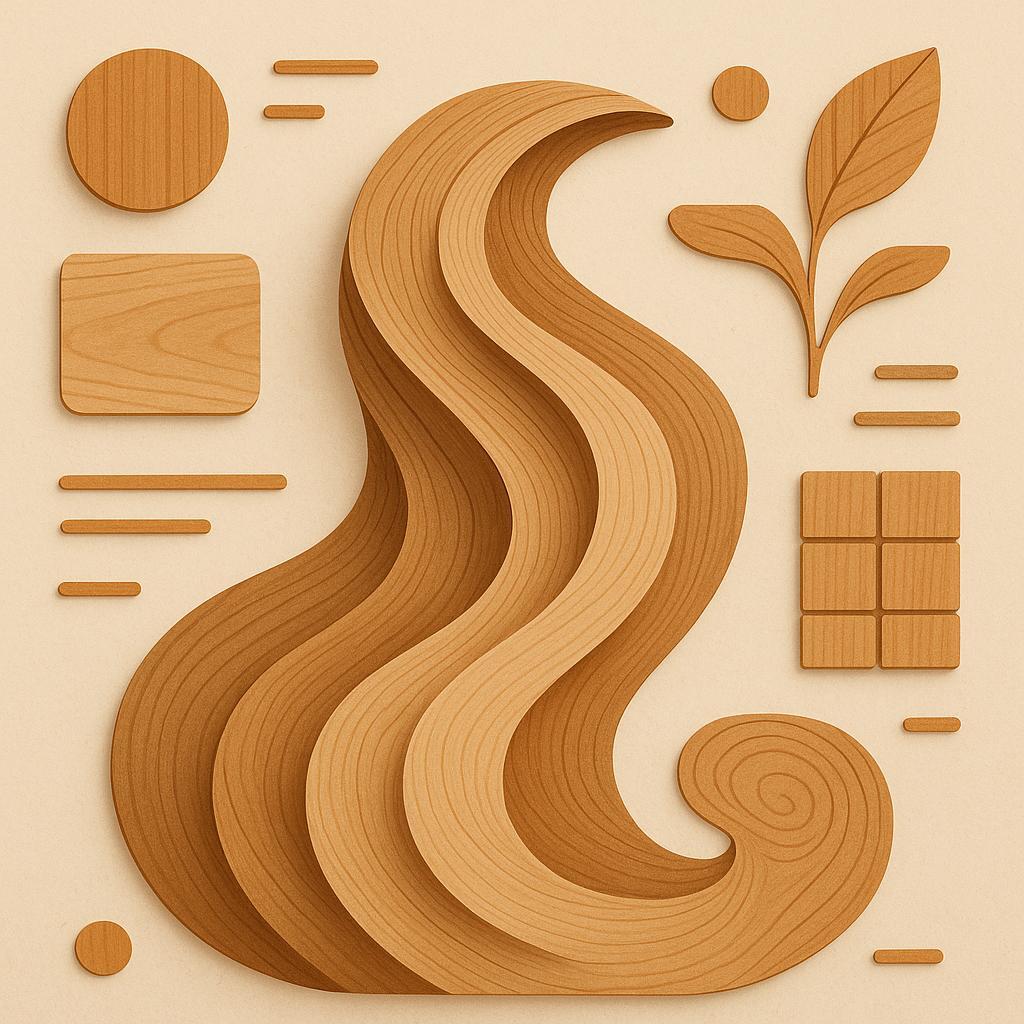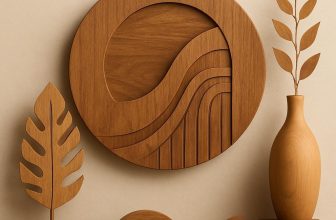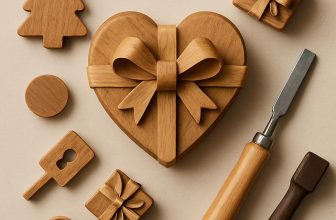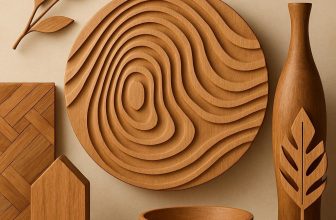
Wood is speaking in 2025, and the tone is modern, versatile, and surprisingly personal. In ‘Trending Woodworking Styles and ideas for 2025,' this year's trends reshape how we choose materials, finishes, and joinery, making every project a statement of craft and consciousness. For woodworking enthusiasts, staying current means discovering new styles to adapt, experiment, and blend with timeless techniques.In this article, you'll discover the standout trends, learn practical ways to implement them, and hear decisions you can tailor to your shop, budget, and skill level. Equip yourself with ideas that inspire, inform, and elevate your next build.
:
– Exploring Trending Materials and Finishes for the Year Ahead in Woodworking
Trend-watchers in woodworking are prioritizing materials that balance beauty, stability, and sustainability. Bamboo plywood and high-quality veneer cores bring warmth and a modern grain without the weight, while engineered lumber with consistent layups reduces warping in long runs and panels.Reclaimed boards and locally milled species add character and a smaller carbon footprint, inviting you to tell a story with texture.When choosing stock, seek certifications (FSC or PEFC) and ask about milling, drying, and storage to ensure colour integrity for future pieces.
Finishes are catching up with those values. Waterborne polyurethanes and UV‑cured coatings deliver durable protection with low odor and faster cure times, ideal for busy workshops.Matte and satin sheens remain the sweet spot-enough gloss to read grain without shouting, with very forgiving touch. For a hands-on aesthetic, try hard wax oils; for kitchens and desks subjected to wear, a protective topcoat with high abrasion resistance is worth the extra step. Always run small tests on scrap stock under the same lighting as the project and document the results for consistency.
| Finish | Vibe | Durability | Maintenance |
|---|---|---|---|
| Waterborne Polyurethane | Clear,modern | High | Wipe clean; recoat when dull |
| Hard Wax Oil | Warm,natural | Medium | Periodic reapplication |
| UV-cured Coatings | Slick,durable | Very High | Sparse maintenance |
Material choices pair powerfully with design styles. Japandi favors light ash, maple, or birch finished in a soft, matte look that lets grain run freely. Walnut, oak, or cherry with a warm satin oil or a subtle varnish suits mid‑century modern boldly, while rustic and industrial spaces sing with reclaimed boards, live‑edge slabs, and a restrained hard‑wax finish that preserves texture. Use the table as a fast decision guide during a project brainstorm: note the vibe you want, the traffic level, and the maintenance you're willing to perform.
actionable steps to stay ahead in 2025: request a small sample run from suppliers to compare color, texture, and scent of finishes; favor local or responsibly milled stock to reduce transport; and create a simple finish plan that maps each piece to its expected use. Keep a little “finish notebook” with swatch photos, notes on curing times, and maintenance tips so your team can reproduce results consistently across batches.
Build Your Dream Workshop on a Budget →
– Embracing Minimalist Modern Styles for Small Spaces with Practical Build Guides
Minimalist modern styles flourish in compact homes by balancing function, light, and honest materials. Clean lines and open sightlines help spaces feel larger, while integrated storage keeps clutter out of sight. In small rooms, choose pale tones, natural wood textures, and simple hardware to create calm, cohesive atmospheres. Plan pieces that can perform double duty, such as a bench with concealed storage or a coffee table that doubles as a tray for everyday living, to maximize every square inch without sacrificing comfort.
start with scale-aware design: pick furniture that sits comfortably within the room's proportions and leaves space to move. Use lightweight materials like 1/2″-3/4″ plywood with a clean edge, and reinforce with hidden brackets for a floating look.Choose hardware with low profiles-concealed hinges, recessed pulls, and screw-fastened legs that glide under cushions. Each piece should feel integrated into the room, not an afterthought.
Here are space-saving build options with quick specs to guide your next project.
| Item | Dimensions (in) | materials | Finish |
|---|---|---|---|
| Floating Desk | 36 x 18 x 1.5 | Baltic birch plywood with edge banding | Clear polyurethane |
| Drop-Leaf Console Table | 30 x 18 x 1.5 | 3/4″ plywood + maple cleats | Matte satin |
| storage Bench | 40 x 16 x 18 | Plywood core with veneer top | Natural matte |
Finalize with a restrained finishing plan: use water-based finishes, avoid heavy coatings, and keep hardware minimal so the wood grain remains the focus.sketch a simple build flow, order materials, and cut parts using accurate patterns to reduce waste. Start with a single adaptable piece and expand later if needed-this keeps the space feeling open while you grow your workshop.
Build Your Dream Workshop on a Budget →
– Sustainable Sourcing and Eco Friendly Practices for Woodworking in the Year Ahead
In 2025, sustainable sourcing isn't an afterthought-it's a design constraint and a storytelling hook. Woodworkers can align their practice with environmental responsibility by choosing materials with credible provenance, low embodied energy, and minimal processing. Consumers crave clarity about where wood comes from, how it was harvested, and how by-products are managed. Highlight the full lifecycle of each piece-from forest to shipment to finish-and back to you for repair or recycling.
Key steps to implement this year include:
- Obtain certifications and documentation: request credible papers such as FSC,PEFC,or SFI and verify chain of custody with your supplier.
- Source locally: aim for mills within a defined radius to cut transport emissions and support regional forest stewardship.
- Prioritize reclaimed or salvaged wood: repurposed boards reduce harvesting pressure while adding character.
- Choose finishes with low environmental impact: favor water-based, low-VOC options and non-toxic alternatives when possible.
Beyond sourcing, consider the material's lifecycle as part of your project brief. A quick certification snapshot can help customers understand the choices behind your work:
| Certification | What it ensures |
|---|---|
| FSC | Forest stewardship and traceability |
| PEFC | Chain of custody and sustainable forestry |
| SFI | Responsible management for North American forests |
embed sustainable thinking into production workflows. Design for disassembly, reuse offcuts for future projects, and invest in dust collection and recyclable packaging to minimize waste. Document your choices in a simple sustainability note for clients and look for opportunities to reduce energy use in drying,finishing,and shipping.
Build Your Dream Workshop on a Budget →
– Reclaimed Wood Revival and Vintage Aesthetics for Timeless furniture
Reclaimed wood revival is more then a season trend-it's a thoughtful approach to building with history. Each plank carries scars, tone shifts, and stories that translate into furniture with instant character and longevity. By embracing salvaged boards, you reduce waste, celebrate craftsmanship, and create pieces that feel timeless rather than disposable.
- Source locally from salvage yards, barns, mills, or deconstructed buildings to cut transport and support communities.
- Inspect boards for stability: check for warping, cracks, checks, nails, and evidence of pests.
- Test moisture content and allow for proper acclimation before cutting or joining.
- document origin when possible to guide future restoration and care.
To maintain a vintage aesthetic,focus on texture,patina,and honest finishes that highlight the wood's age rather than mask it. techniques like wire-brushing to open the grain,light hand-sanding for a satin feel,and low-sheen coatings create that tactile,heritage vibe. When selecting finishes, think of them as a design layer-not a shield-so you can preserve the wood's lived-in warmth.
Finish options are not just protection; they're design statements. The table below groups finishes by look and practicality, helping you match the mood of a room with the right treatment. Use these as a starting point to experiment on scrap pieces before committing to a full project.
| Finish | Look | Best For |
|---|---|---|
| Matte Oil | Deepens color; preserves grain | Tables, desks |
| Wax polish | Silky hand, warm patina | Small accents, frames |
| Water-based Stain | Subtle color lift; minimal gloss | Shelves, cabinetry |
| Limewash / Whitewash | Rustic, sunlit charm | Face frames, panels |
Project ideas and assembly tips keep the momentum going. Try a live-edge dining table with breadboard ends, a coffee table featuring chunky legs joined with dowels or mortise-and-tenon, or wall-mounted shelves that balance heavy timbers with slim braces. Plan carefully: draft cut lists, account for seasonal expansion, and choose rust-resistant hardware to avoid staining the wood over time.
- Keep humidity steady to minimize movement; wipe spills promptly with a dry cloth.
- Reapply a compatible oil or wax every year or as needed to maintain surface feel.
- Avoid aggressive cleaners that can strip oils; use a damp cloth with a mild soap if necessary.
- seal problem joints or ends with matching finish for long-term stability.
Build Your Dream Workshop on a Budget →
– Bold Geometric Designs and Textured Surfaces for Statement Pieces with Actionable Techniques
Bold geometric designs and textured surfaces redefine statement pieces in 2025. The key is combining sharp angles with tactile finishes to create furniture that reads sculptural from a distance and invites touch up close.Use high-contrast pairings like walnut with pale maple,or tessellated inlays that emphasize facets.For a cohesive look,sketch the grid first and translate it into the actual piece with precise cutting and joints.Plan your geometry around the workpiece's grain so the pattern integrates as part of the wood, not an overlay.
To implement boldly, follow these actionable steps:
- Design with intention: Sketch a geometric grid that fits the piece's dimensions, then pick 2-3 shapes to repeat.
- Cut with precision: Use a guide template or a CNC for clean facets; clamp the work securely and test-fit before final assembly.
- Join for strength and style: Consider spline or finger joints at each vertex to lock polygons; use contrasting splines as a visual cue.
- Finish to enhance texture: Brush,wire-brush,or burnish surfaces to emphasize depth; apply a matte finish to keep geometry readable.
Texture adds tactility without overpowering the geometry. A well-tuned texture can turn a flat panel into a tactile hero. Consider these approaches: wire-brushed surfaces to bring up grain, hand-planed facets to create soft ridges, or sculpted relief to catch light from different angles.For a refined look, pair a subtle texture on a projecting face with a high-contrast gloss on selected facets.
| Texture method | Tool | Notes |
|---|---|---|
| Wire-brushed | Wire brush or rasp | Exposes grain on flat/edge faces |
| Planed facets | Block plane | Creates soft ridge lines across facets |
| subtle stipple | Vibra-sander with finishing pad | Gentle texture on large panels |
Finish choices should preserve the bold geometry: a satin or matte topcoat to minimize glare, with a touch of oil to deepen the wood's character. Consider combining materials-solid frame with a textured veneer panel or a contrasting core-to elevate the piece without competing with the geometry. test the look on scraps to verify lighting and shadow interplay before committing to the full build, and keep sustainability in mind by choosing water-based finishes when possible.
Build Your Dream Workshop on a Budget →
– Smart Tool Upgrades and Efficient Workflows to Execute the Latest Woodworking Trends
Smart tool upgrades are reshaping how projects move from plan to finish. In 2025, cordless tools paired with IoT sensors, compact CNC routers, and laser engravers empower you to prototype quickly with repeatable results.Start by auditing your shop: identify the finish, joinery, and material types you tackle most, then map how a few targeted upgrades could shave setup time and improve accuracy. Key upgrades to consider
- Digital measuring and layout tools (laser distance measurers, digital calipers, angle finders) for precise planning.
- CNC routers or laser engravers to handle repeat patterns and decorative details, boosting consistency.
- Smart dust collection and filtration with sensors that auto-trigger when thresholds are met.
- Battery-powered handheld tools to reduce cord clutter and improve mobility on small projects.
Efficient workflows begin with an intentional shop layout and standardized processes. Streamlined shop flow ensures materials move smoothly from raw stock to finished piece, cutting waste and downtime. Implement modular,mobile workstations with integrated clamping systems to minimize material handling,adopt standardized stock sizes and cut lists,and use a digital project board or checklist that tracks progress from plan to finish.
| Area | Upgrade | impact |
| Material handling | Modular carts with labeled bins | Faster picks, fewer mistakes |
| Setup time | Zero-clearance jigs and sacrificial panels | Quicker joints with consistent depth |
| Quality control | In-process checks with digital calipers | Tighter tolerances |
Implementation path and budgeting should follow a staged approach tailored to your space and budget.Phased upgrade plan helps you scale without overwhelming the shop. Phase 1 (0-3 months) focuses on essential measuring tools, a track saw or compact CMS, and a reliable dust extractor. Phase 2 (3-9 months) introduces a mid-range upgrade like a small CNC router and a laser engraver, plus IoT-enabled dust management. Phase 3 (12+ months) adds smart clamps, automation-ready workstations, and cloud-based project tracking to keep everything synchronized.
| Category | Starter Pick | Growth Pick |
|---|---|---|
| Cutting | Cordless track saw | Compact CNC router |
| Dust management | Bag-style dust collector | Cyclone dust collector with automatic blast gates |
| Finishing | Spray booth with inline filtration | Inline ventilation with humidity control |
Safety, training, and ongoing maintenance keep investments valuable. Build a safety-forward routine with quarterly tool calibrations, PPE readiness, and clear storage protocols. Schedule online courses or local workshops to stay current with 2025 trends and best practices, then routinely review your workflow for bottlenecks or opportunities to automate repetitive tasks. By pairing smart upgrades with disciplined workflows, you'll translate cutting-edge techniques into tangible projects that move faster and look sharper.
Build Your Dream Workshop on a Budget →
Q&A
What woodworking styles are trending in 2025?
Expect a blend of warm minimalism, natural edges, and tactile surfaces. Clean lines meet organic shapes, with visible joinery and handcrafted details taking center stage. Color palettes favor warm wood tones, soft whites, and muted greens, plus mixed materials like metal and stone.
Which projects are most achievable for beginners that align with these trends?
Start with practical, small pieces: a wall shelf, a coffee table with exposed joinery, or a planter box with a live-edge look. These projects use basic cuts, standard stock, and simple finishes while teaching fundamentals of layout, glue-up, and finishing. As you gain confidence, add a curved edge or inlay for a trend-faithful touch.
What tools and safety tips should I focus on to stay current in 2025?
Prioritize dust control, agreeable clamps, and accurate cuts with a table or track saw. A reliable set of blades, a sharpening routine, and a good workholding setup save time and improve results. Always wear eye and hearing protection, and follow safe operation practices to protect against kickback and dust.
How can I source sustainable materials and achieve contemporary finishes?
Look for FSC/PEFC-certified wood and consider reclaiming or locally sourced boards to reduce environmental impact.Choose water-based or low-VOC finishes for safer,quicker-drying results.Always test finishes on scrap and note the wood's behavior before applying to your project.
In Conclusion
2025's trends blend sustainability with tactile richness, inviting you to mix reclaimed wood, modular forms, warm oil finishes, and subtle textures. The core takeaway isn't a single look but a versatile toolkit: use ideas as sparks to experiment within your own shop and skill set. Why it matters: trends refresh the craft,turning challenges into opportunities and keeping projects meaningful for enthusiasts who learn,adapt,and share.Action: pick a project that nudges you outside your comfort zone, explore a new guide, or reimagine a favourite piece with a fresh finish. May your bench stay busy, your curiosity stay hungry, and your next creation leave you inspired.







Absolutely love these trends! The mix of contemporary aesthetics with classic woodworking techniques is so inspiring for both beginners and seasoned woodworkers. Can’t wait to try out some of these ideas!
These styles are fantastic! I’m especially drawn to the sustainable approaches emerging in woodworking; it’s great to see an emphasis on eco-friendly materials and practices while maintaining artistic integrity. Looking forward to experimenting with some of these concepts!
I’m thrilled to see such innovation in woodworking! The fusion of technology with traditional methods really opens up a whole new world of creativity. Excited to dive into these trends and see how they evolve in 2025!
So inspiring to see the woodworking community embracing bold shapes and colors! The exploration of new finishes and techniques really pushes the boundaries of what we can create. I’m excited to incorporate some of these trends into my next projects!
I couldn’t agree more with all the excitement surrounding these trends! The blend of innovation and tradition in woodworking opens up endless possibilities. I’m particularly interested in exploring how incorporating smart technology can enhance the craftsmanship while keeping it eco-conscious. Bring on 2025!
I’m loving the direction woodworking is heading in! The combination of modern design with traditional craftsmanship is such a rich source of inspiration. I can’t wait to see how these trends manifest in my own projects and contribute to a sustainable future in the craft!
Absolutely! The emphasis on sustainability and creative design in woodworking is so refreshing. I’m particularly excited about the idea of repurposing materials for unique projects-it adds a personal touch while being mindful of our resources. Can’t wait to see what 2025 brings!
I completely agree with everyone! The future of woodworking looks so promising with the focus on creativity and sustainable practices. I’m excited to experiment with bold designs and innovative techniques that honor tradition while embracing modern aesthetics. Here’s to a fantastic 2025 filled with inspiring projects!
I love how the woodworking community is coming together to celebrate these emerging trends! The fusion of traditional methods with contemporary designs and eco-friendly practices is truly inspiring. I can’t wait to showcase my own interpretations of these styles in 2025; there’s so much potential for creativity and innovation ahead!
I’m thrilled to see how these innovative styles will redefine woodworking in 2025! The integration of technology and sustainable practices not only enhances our craftsmanship but also encourages creativity in ways we haven’t seen before. Can’t wait to dive into new projects that reflect this exciting evolution in our craft!
I share everyone’s excitement about the future of woodworking! The blend of innovative designs and sustainability is truly revolutionary, and I can’t wait to explore how these trends will inspire my own work in 2025. It’s a fantastic time to be part of this creative community!
I’m so inspired by all these insights! It’s amazing to think about how the evolution of woodworking will challenge us to think outside the box while respecting our roots. Embracing unique materials and innovative methods will definitely result in some stunning creations. Here’s to pushing the boundaries of our craft in 2025!